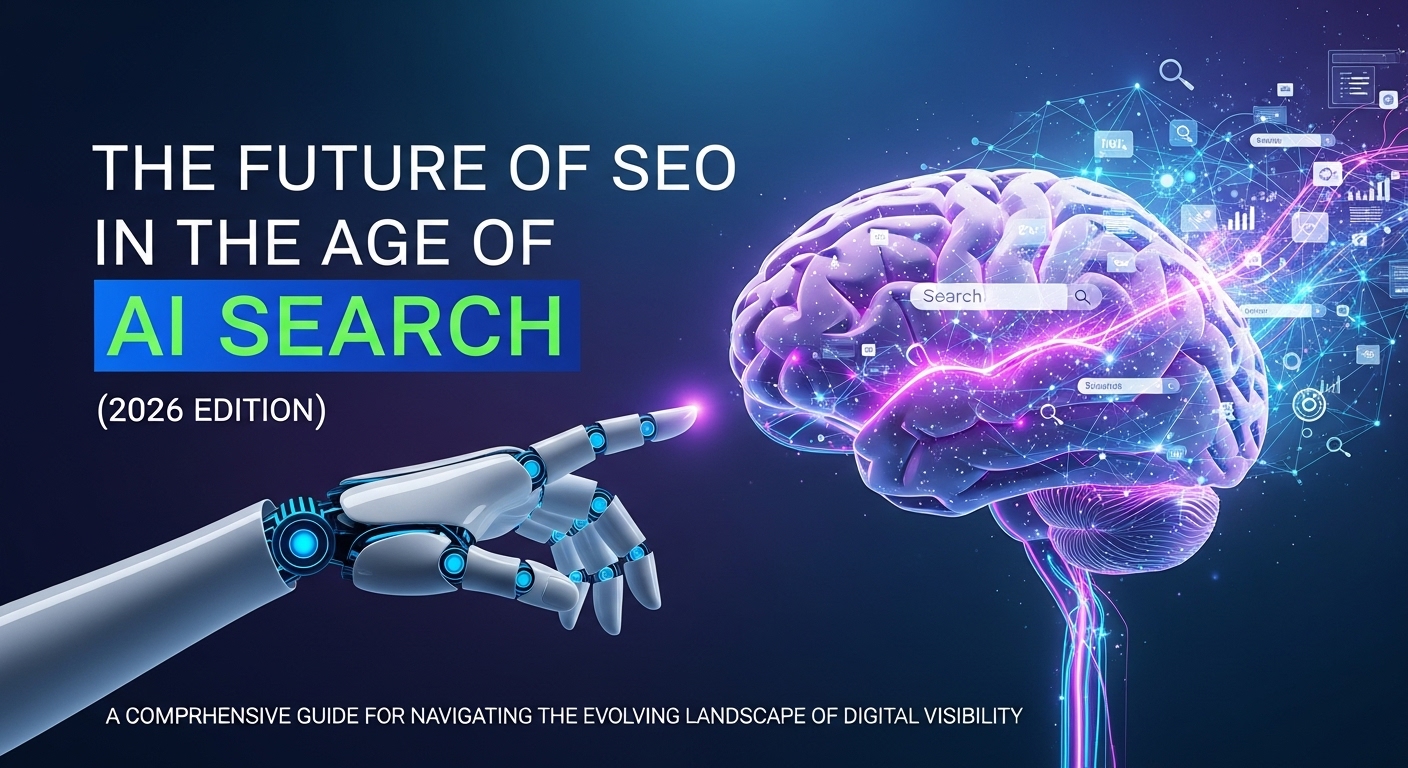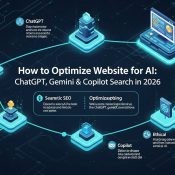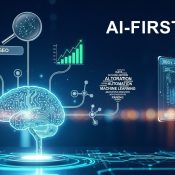
The Future of SEO in the Age of AI Search (2026 Edition)
The Future of SEO in the Age of AI Search (2026 Edition)
How Generative AI Is Transforming Search—And What It Means for Your Strategy
The search landscape has undergone a seismic shift. As we navigate through 2026, the way people discover information online bears little resemblance to the keyword-stuffed, backlink-obsessed SEO practices of just a few years ago. Google’s Search Generative Experience (SGE), AI overviews, and the proliferation of voice-first interfaces have fundamentally altered how content is discovered, ranked, and consumed.
Yet amid this technological revolution, one truth remains constant: human intent hasn’t changed. People still seek answers, solutions, and connections. The difference lies in how we, as marketers and content creators, must adapt our strategies to meet them where they are—in an era where AI mediates nearly every search interaction.
ALSO, READ Structured Data and Schema Markup: The Ultimate Guide for 2026
This comprehensive guide explores the cutting-edge of AI SEO in 2026, revealing how generative search optimization works, why human-centric SEO has become non-negotiable, and what concrete steps you can take to ensure your content thrives in this new paradigm.
Understanding the AI Search Revolution: What Changed and Why It Matters
The Rise of Search Generative Experience (SGE)
Google’s Search Generative Experience represents the most significant transformation in search since the company’s founding. Rather than presenting a traditional list of blue links, SGE generates comprehensive, conversational responses synthesized from multiple sources. This AI-powered snapshot appears at the top of search results, directly answering user queries with contextual depth that traditional snippets never achieved.
For users, this means faster answers and reduced friction. For content creators, it means competing for visibility within AI-generated summaries rather than simply ranking for position one. The implications are profound: your content may inform search results without receiving direct traffic, fundamentally changing how we measure SEO success.
AI Overviews and the Zero-Click Search Phenomenon
The zero-click search trend has accelerated dramatically. Recent data suggests that nearly 60% of Google searches now end without a click to an external website. AI overviews satisfy user intent directly within the search interface, providing synthesized information, comparative analyses, and actionable insights without requiring users to navigate away.
This shift challenges traditional traffic-focused metrics. Instead of obsessing over click-through rates alone, modern SEO practitioners must focus on brand visibility, authority signals, and being cited as a trusted source within AI-generated responses. Your content’s influence extends beyond direct visits—it shapes how AI systems understand and present information in your domain.
Voice-First Interfaces and Conversational Query Patterns
Voice search through virtual assistants, smart speakers, and mobile devices has matured beyond simple commands. Natural language processing capabilities now handle complex, multi-part queries delivered in conversational tones. Users no longer think in keywords—they think in questions, contexts, and scenarios.
This evolution demands a corresponding shift in content strategy. The future belongs to content that answers questions the way humans naturally ask them, not how they might type abbreviated queries into a search box. Structured, conversational content that addresses complete user journeys outperforms keyword-optimized fragments.

The New Fundamentals: AI SEO Principles for 2026
Semantic Authority Over Keyword Density
Traditional keyword optimization focused on density, placement, and exact-match variations. AI search systems operate differently. They evaluate semantic authority—your content’s comprehensive coverage of topics, the depth of expertise demonstrated, and the conceptual relationships between ideas.
Modern AI algorithms understand context, synonyms, related concepts, and user intent with unprecedented sophistication. They recognize when content genuinely serves user needs versus when it merely targets keywords. This means creating content that thoroughly explores topics, addresses related questions, and demonstrates genuine expertise trumps shallow, keyword-stuffed alternatives.
Practical implementation involves topic clustering, where cornerstone content comprehensively covers primary subjects while supporting articles address specific subtopics and user questions. This architecture signals topical authority to AI systems, increasing the likelihood your content informs AI-generated responses.
Entity Optimization and Knowledge Graph Alignment
Google’s Knowledge Graph and similar semantic networks power AI understanding of entities—people, places, organizations, concepts, and their relationships. Optimizing for entities rather than just keywords helps AI systems accurately understand and categorize your content.
Entity optimization involves consistent naming conventions, structured data markup, clear contextual references, and establishing your brand or expertise as a recognized entity within your domain. When AI systems can confidently understand what you’re about and how you relate to other entities, your content becomes more discoverable and citable.
This includes claiming and optimizing your Google Business Profile, maintaining consistent NAP (Name, Address, Phone) information across platforms, earning mentions from authoritative sources, and using schema markup to explicitly define entities within your content.
E-E-A-T in the Age of Generative AI
Experience, Expertise, Authoritativeness, and Trustworthiness (E-E-A-T) have evolved from quality guidelines to ranking imperatives. AI systems actively evaluate these signals when determining which sources to cite, feature, or recommend.
Demonstrating experience means showing first-hand knowledge. Include case studies, personal insights, original research, and real-world applications. AI algorithms can detect the difference between regurgitated information and genuine experiential knowledge.
Expertise requires credentials, demonstrated knowledge depth, and recognition within your field. Author bylines should link to author pages detailing qualifications. Content should cite sources, reference current research, and maintain technical accuracy.
ALSO, READ Future Trends in SEO and Web Infrastructure (2026–2030)
Authoritativeness comes from external validation—backlinks from respected sources, mentions in industry publications, social proof, and digital footprint across authoritative platforms. Building authority requires consistent thought leadership and strategic relationship-building.
Trustworthiness encompasses security (HTTPS), transparency about authorship and editorial processes, clear privacy policies, accurate information, and regular content updates. AI systems penalize sites with trust signals that raise red flags.
Content Architecture for AI Discovery
Structuring Content for AI Comprehension
AI systems parse content differently than human readers. While humans skim headings and scan for relevant sections, AI algorithms analyze structure, semantic relationships, and information hierarchy. Optimizing for AI comprehension requires deliberate architectural choices.
Use clear, descriptive headings that follow logical hierarchies (H1, H2, H3) and accurately describe section content. AI systems use these structural signals to understand content organization and extract relevant information for specific queries.
Implement schema markup extensively. Schema.org vocabulary helps AI systems understand content type, purpose, and key information. Articles should use Article schema, FAQs should use FAQPage schema, how-to guides should use HowTo schema, and so forth. This structured data acts as a translation layer between human-readable content and machine comprehension.
Create content modules that address specific user intents. Rather than forcing readers to wade through tangential information, structure content so AI systems can extract precise answers to specific questions while maintaining context.
The Answer-First Approach
AI overviews prioritize content that delivers answers immediately. The traditional SEO practice of burying answers deep in content to maximize time-on-page has become counterproductive. AI systems reward content that respects user time and directly addresses queries.
Implement an answer-first structure: lead with clear, concise responses to the primary question, then provide context, details, and supporting information. This mirrors how AI overviews present information and increases the likelihood your content gets featured.
Use featured snippet optimization techniques throughout content. Format information as bulleted lists, numbered steps, definition paragraphs, and comparison tables. These formats align with how AI systems extract and present information.
Question-Driven Content Development
Modern content strategy begins with questions, not keywords. Understanding what users actually want to know—and the language they use to express those needs—drives effective AI-optimized content.
Leverage question research tools, analyze “People Also Ask” boxes, review forum discussions, examine customer support inquiries, and use AI-powered research tools to uncover the full spectrum of questions within your domain.
Create comprehensive FAQ sections that address common and long-tail questions. These become valuable assets for AI systems seeking specific answers and increase your content’s visibility across diverse query variations.
Develop content that addresses question sequences—the follow-up questions users naturally ask after receiving an initial answer. This anticipatory approach demonstrates deep understanding of user journeys and positions your content as comprehensive resources worthy of citation.
Technical SEO in the AI Era
Core Web Vitals and User Experience Signals
Page experience remains critical, perhaps more so in the AI era. While AI systems can extract information from slow-loading or poorly designed sites, they preferentially cite and recommend sources that deliver superior user experiences.
Core Web Vitals—Largest Contentful Paint (LCP), First Input Delay (FID), and Cumulative Layout Shift (CLS)—directly impact rankings. Mobile-first design is non-negotiable. Page speed optimization through image compression, lazy loading, efficient code, and content delivery networks (CDNs) separates winners from losers.
Accessibility features benefit both human users and AI comprehension. Alt text for images, descriptive link text, clear navigation, keyboard accessibility, and proper color contrast improve usability while providing additional context for AI systems.
API-First Content and Structured Data
As AI agents increasingly access information programmatically, API-first content strategies gain importance. Making your content accessible through APIs, feeds, and structured data formats positions you favorably for AI discovery.
RSS feeds, JSON-LD markup, XML sitemaps, and open graph protocols ensure your content is machine-readable across platforms and AI systems. This technical foundation makes your information easily discoverable and distributable.
Implement dynamic rendering for JavaScript-heavy sites to ensure AI crawlers can efficiently access content. While Google has improved JavaScript rendering, providing server-side rendered or pre-rendered versions remains best practice.
Crawl Budget Optimization for AI Bots
Traditional SEO focused on Googlebot, but the AI era introduces numerous bots from various AI systems seeking to ingest and understand web content. Managing crawl budget effectively across multiple AI agents requires strategic technical implementation.
Optimize robots.txt files to guide AI crawlers toward high-value content while restricting access to low-value pages. Use crawl-delay directives judiciously to manage server load without blocking important discovery.
Monitor server logs to identify which AI bots visit your site, their crawling patterns, and resource consumption. Adjust technical SEO strategy based on which AI systems matter most for your goals.
Human-Centric SEO: The Counterintuitive Key to AI Success
Why Human Intent Still Drives Everything
Despite AI’s dominance in search, human needs remain the ultimate target. AI systems optimize for user satisfaction—they succeed when users find what they need quickly and completely. Therefore, the path to AI SEO success paradoxically runs through deeply understanding human psychology, behavior, and intent.
User intent classification—informational, navigational, transactional, commercial investigation—remains foundational. AI systems excel at matching content to intent, so creating content precisely aligned with what users seek in each intent category maximizes visibility.
Develop user personas based on real data, not assumptions. Understand pain points, goals, knowledge levels, and decision-making processes. Content that resonates with actual human needs naturally performs better in AI-mediated search environments.
Emotional Resonance and Engagement Signals
AI systems increasingly evaluate engagement signals—how users interact with content after arrival. High bounce rates, short dwell times, and lack of interaction signal poor content-intent match, negatively impacting future visibility.
Create emotionally resonant content that connects with readers beyond information delivery. Storytelling, relatable examples, emotional triggers, and personality-driven writing maintain engagement and signal content quality.
Interactive elements—calculators, quizzes, interactive infographics, video content—boost engagement metrics. While these don’t directly influence AI content extraction, they improve user satisfaction signals that indirectly benefit SEO.
Building Digital Trust in an AI-Skeptical World
As AI-generated content proliferates, users increasingly crave authenticity and trustworthiness. Demonstrating genuine human expertise and transparency differentiates your content in an ocean of machine-generated mediocrity.
Feature author credentials prominently. Include author photos, detailed bios, links to social profiles, and evidence of expertise. Video introductions from authors add powerful authenticity signals.
Transparency about AI usage builds trust. If AI tools assist your content creation, disclose this while emphasizing human oversight, editing, and expertise. Users appreciate honesty and distinguish between AI-assisted and AI-generated content.
ALSO, READ The Ultimate Technical SEO Playbook for 2026 and Beyond
Original research, unique data, proprietary insights, and first-person experiences create differentiation impossible for competitors to replicate. These elements establish authority and provide AI systems with unique information worth citing.
Voice Search Optimization: The Conversational Imperative
Understanding Natural Language Queries
Voice search queries differ fundamentally from typed searches. They’re longer, more conversational, question-based, and context-dependent. Optimizing for voice requires understanding how people naturally speak, not how they type.
Conversational queries often include context that typed searches omit. “What’s the best Italian restaurant open right now near me” versus typing “Italian restaurant.” Content optimized for voice must address these fuller, more contextual queries.
Long-tail keyword optimization takes on new importance. Voice searches frequently use complete sentences and specific phrasing. Creating content that naturally addresses these verbose, conversational queries increases voice search visibility.
Local SEO and Voice Commerce
Voice search shows pronounced local intent. Queries like “near me,” location-specific questions, and business information requests dominate voice search patterns. Local SEO optimization becomes critical for voice visibility.
Ensure Google Business Profile optimization with accurate information, complete categories, regular posts, prompt review responses, and high-quality images. Voice assistants pull heavily from Business Profile data for local queries.
Implement local schema markup including Local Business schema, reviews markup, operating hours, service areas, and location-specific content. These structured data elements help voice assistants accurately understand and recommend your business.
Position Zero and Featured Snippet Domination
Voice assistants predominantly read from featured snippets—position zero in search results. Optimizing content for featured snippet selection directly improves voice search presence.
Answer questions concisely in 40-60 words immediately following question-formatted headings. This structure aligns with featured snippet algorithms and voice assistant response formats.
Use definition formats, list formats, table formats, and step-by-step instructions—structures that Google frequently features and voice assistants easily parse and vocalize.
Content Quality Signals That Matter in 2026
Originality and Information Gain
With AI making content creation trivially easy, the web faces an avalanche of derivative, repetitive information. Search systems combat this through sophisticated originality detection and information gain evaluation.
Information gain measures whether your content adds new information beyond what already exists. Regurgitating common knowledge results in low information gain scores. Original research, unique perspectives, proprietary data, expert insights, and novel frameworks demonstrate high information gain.
Avoid content homogenization—the tendency for all content on a topic to converge toward identical information. Differentiate through unique angles, depth in specific areas, updated information, and perspectives others haven’t explored.
Freshness and Content Velocity
Content decay affects rankings more rapidly in the AI era. Algorithms prioritize fresh, updated information, particularly for time-sensitive topics. Regular content updates signal active maintenance and commitment to accuracy.
Implement content auditing systems to identify underperforming or outdated content. Update statistics, refresh examples, add recent developments, remove obsolete information, and republish with new publication dates.
Content velocity—the frequency of new content publication—influences domain authority. Consistent publication demonstrates expertise, commitment, and authority within your niche. However, quality always trumps quantity; regular publication of mediocre content damages rather than builds authority.
Depth, Comprehensiveness, and Topic Saturation
Comprehensive content that thoroughly explores topics signals expertise and authority. AI systems evaluate topical completeness—whether content addresses the full spectrum of relevant subtopics, questions, and considerations.
Topic saturation involves covering a subject so thoroughly that little remains unsaid. This doesn’t mean creating excessively long content, but rather ensuring all important aspects receive appropriate attention.
Use topic modeling tools and competitive content analysis to identify gaps in your coverage. Address questions competitors miss, explore angles others overlook, and provide depth where others offer surface-level treatment.
Link Building in the Age of AI Validation
Quality Signals Over Quantity Metrics
Link building fundamentals endure, but AI systems evaluate link quality with unprecedented sophistication. They assess linking site authority, topical relevance, link context, user engagement metrics of linking sites, and whether links appear natural or manipulative.
Toxic link profiles pose greater risks than ever. AI systems detect unnatural link patterns, link farms, paid link schemes, and manipulative anchor text distributions with high accuracy. Clean, natural link profiles outperform aggressive, artificial link-building campaigns.
Focus on earning links through genuinely valuable content, original research, authoritative resources, and relationship building within your industry. Guest posting remains viable when focused on contributing value to respected publications, not merely acquiring links.
Digital PR and Brand Mentions
Unlinked brand mentions—references to your brand, people, or products without hyperlinks—increasingly influence authority signals. AI systems track brand mentions across the web, evaluating sentiment, context, and mention sources.
Digital PR strategies that earn media coverage, interviews, podcast appearances, and industry recognition build authority signals beyond traditional backlinks. These diverse mentions paint a comprehensive picture of your authority and influence.
Implement brand monitoring tools to track mentions and proactively engage with opportunities for link reclamation—reaching out to sites that mention you without linking to request proper attribution with links.
The Rise of Semantic Link Value
Link context and semantic relevance matter more than raw link counts. A single link from a highly relevant, authoritative source within your niche outweighs dozens of links from tangentially related or low-authority sites.
AI systems evaluate the content surrounding links—the words, sentences, and paragraphs near link placement. Links embedded in contextually relevant, valuable content pass more authority than links in generic, thin content.
Internal linking strategy gains importance as AI systems use link structure to understand content relationships and site architecture. Strategic internal linking that reflects content hierarchies and topical relationships helps AI systems comprehend your expertise areas.
Video and Multimodal Search Optimization
The Visual Search Revolution
Search increasingly incorporates multiple modalities—text, images, video, and audio. Optimizing across these formats maximizes discovery opportunities as users search in diverse ways.
Video content dominates user engagement and receives preferential treatment in search results. AI systems can now understand video content through speech recognition, visual analysis, and context understanding, making video SEO more sophisticated and important.
Implement comprehensive video optimization including descriptive titles, detailed descriptions with timestamps, accurate transcriptions, relevant tags, custom thumbnails, closed captions, and chapter markers. These elements help AI systems understand and index video content.
Image Optimization for AI Vision
AI vision capabilities allow search engines to understand image content beyond file names and alt text. However, traditional image SEO remains foundational—descriptive file names, comprehensive alt text, image sitemaps, and structured data markup.
Use high-quality, original images when possible. Stock photos lack uniqueness and provide limited differentiation. Original images, infographics, data visualizations, and custom photography signal quality and originality.
Implement image lazy loading, modern format usage (WebP, AVIF), responsive images, and compression to maintain Core Web Vitals while using visual content extensively.
Podcast and Audio Content Discovery
Podcast and audio content present unique SEO opportunities and challenges. AI systems can now transcribe and understand audio content, making it searchable and discoverable.
Publish transcriptions alongside podcast episodes. Transcriptions make audio content accessible, searchable, and usable by AI systems synthesizing information across formats.
Optimize podcast metadata including titles, descriptions, episode notes, and tags. Distribute through multiple platforms to maximize discovery. Create supplementary blog content exploring podcast topics in depth, linking between audio and written formats.
Measuring Success: New Metrics for AI SEO
Beyond Traffic: Authority and Influence Metrics
Traditional SEO metrics—traffic, rankings, click-through rates—provide incomplete pictures in the AI era. Comprehensive measurement requires evaluating authority, influence, and brand impact beyond direct website visits.
Track brand search volume to measure awareness and brand strength. Increasing branded searches indicate growing authority and recognition—outcomes that transcend specific keyword rankings.
Monitor share of voice in AI overviews and featured snippets. Tools emerging in 2026 track how often your content appears in AI-generated responses, providing insight into your authority within AI systems even when users don’t click through.
Engagement Quality Over Quantity
User engagement metrics reveal content effectiveness. Evaluate scroll depth, time on page, pages per session, return visitor rates, and conversion rates to understand how well content serves user needs.
AI systems increasingly factor engagement signals into ranking algorithms. Content that satisfies users, evidenced by engagement behavior, receives ranking boosts. Content that disappoints users suffers penalties.
Implement event tracking for meaningful interactions—video plays, tool usage, downloads, shares, comments, and other engagement indicators that signal content value beyond passive consumption.
Attribution in a Multi-Touch World
Customer journey attribution grows more complex as AI mediates discovery. Users may discover your brand through AI overviews, engage via voice assistants, research on mobile devices, and convert on desktop. Understanding these multi-touch journeys requires sophisticated attribution modeling.
First-touch and last-touch attribution models provide insufficient insight. Multi-touch attribution that credits all touchpoints in conversion paths reveals how AI-mediated discovery fits within broader customer journeys.
Implement unified tracking across channels and devices. Use customer data platforms (CDPs) or comprehensive analytics setups that connect touchpoints and reveal true conversion paths in an omnichannel world.
Future-Proofing Your SEO Strategy
Adaptability as Competitive Advantage
The only certainty about search’s future is continued change. Algorithms will evolve, new AI capabilities will emerge, user behaviors will shift, and competitive landscapes will transform. Adaptability—the capacity to pivot strategies as conditions change—becomes the ultimate competitive advantage.
Build flexible content architectures that support evolution. Avoid overly rigid strategies optimized for current algorithms at the expense of long-term adaptability.
Invest in fundamental strengths—genuine expertise, quality content creation, user understanding, and relationship building—that remain valuable regardless of algorithmic changes.
Continuous Learning and Experimentation
SEO success requires ongoing education. Follow industry thought leaders, participate in professional communities, attend conferences, consume research, and maintain awareness of emerging trends and algorithm updates.
Implement systematic testing and experimentation. A/B test content formats, try new optimization techniques, experiment with emerging platforms, and measure results rigorously. Data-driven iteration outperforms static strategies.
Document learnings and develop institutional knowledge. Capture what works, what doesn’t, and why. Build organizational SEO expertise that transcends individual knowledge.
The Human Element Endures
As AI’s role in search expands, the irreplaceable value of human expertise, creativity, and connection becomes more apparent. AI excels at pattern recognition, information synthesis, and efficiency—but human insight, originality, and emotional intelligence remain unmatched.
The future of SEO belongs to those who leverage AI capabilities while doubling down on distinctly human strengths. Use AI tools for research, analysis, and efficiency, but infuse content with human expertise, perspective, and authenticity that machines cannot replicate.
Build genuine relationships within your industry and with your audience. Networks, reputation, and trust developed through human connections create competitive advantages no algorithm can manufacture.
Conclusion: Embracing the AI-Augmented Search Future
The transformation of search through AI represents both challenge and opportunity. Those who cling to outdated SEO practices face irrelevance. Those who embrace AI-era realities while maintaining focus on human needs will thrive.
Success in 2026 and beyond requires balancing technical optimization with human-centric content, leveraging AI tools while developing irreplaceable human expertise, and maintaining adaptability amid constant change. The fundamentals haven’t disappeared—they’ve evolved.
Search algorithms grow more sophisticated, but they ultimately serve the unchanging human desire for answers, solutions, and connections. Content that genuinely serves these needs, optimized for AI discovery but created for human benefit, will always find its audience.
The future of SEO isn’t about gaming algorithms or exploiting loopholes. It’s about becoming a trusted authority in your domain, creating genuinely valuable content, and building sustainable visibility in an AI-augmented search landscape. Those who commit to this path won’t merely survive the AI search revolution—they’ll lead it.




